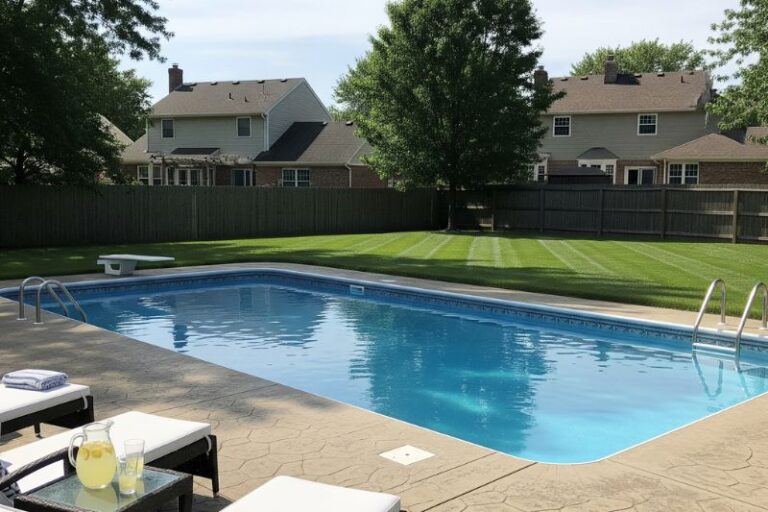Chapter One: The Clues
You walk outside with your coffee, glance at the pool, and notice something strange. The waterline looks slightly lower than yesterday. Maybe it’s just evaporation, you think. You brushed the pool, ran the filter, and balanced the chemicals. It all seems right.
But then it happens again.
And again.
Now you’re starting to wonder. You grab a tape measure and track the change. A quarter inch gone. Then half an inch. The pattern feels too consistent.
Chapter Two: The Interrogation
You consider the usual suspects: natural evaporation, swimmers splashing out water, maybe even the dog taking a dip. To settle it, you perform the bucket test. You fill a bucket with water, place it next to the pool, and mark the water levels. After 24 hours, the pool level drops by half an inch.
The bucket? Barely changes.
Evaporation isn’t the culprit. The leak is real.
Now the hunt begins.
Chapter Three: The Misdirection
You bring in help. The pool technician checks the skimmer, filter, and return lines. Everything seems fine at first glance. But you remember noticing the backwash hose looking a little too loose last week. Could that be it?
Maybe. Maybe not.
Then your thoughts shift underground. You start worrying about pipes buried beneath the pool deck. A leak there could explain the gradual water loss, but it could also mean a serious repair bill. The anxiety builds.
Chapter Four: The Breakthrough
You grab food dye and run a simple test around the pool lights. Nothing. Then you move to the steps. Still nothing. Finally, you hover near the light niche again.
That’s when you see it.
Tiny air bubbles creep out around the gasket. It’s subtle, but it’s there. The old rubber seal had cracked, slowly letting water slip through the housing. A small problem causing a big headache.
You swap out the gasket, seal the niche, and give it a night.
Next morning, the waterline is exactly where you left it.
Chapter Five: Case Closed
Your instincts were right. Something felt off, and you followed the signs. The problem wasn’t evaporation. It was a worn-out light gasket.
Even when pool maintenance seems routine, a leak can hide in plain sight. Confidence is good, but curiosity finds the answers.
Leak Detection Checklist:
- Always start with a bucket test
- Compare water levels after 24 hours
- Examine lights, fittings, steps, and skimmers
- Use food dye to test for movement
- Watch the backwash line for drips
- Don’t overlook older gaskets and seals
- If needed, hire a professional with proper leak detection tools
Pool leak detection might not be dramatic, but it saves water, money, and stress. Look closely, test often, and trust your gut. The mystery doesn’t solve itself.




